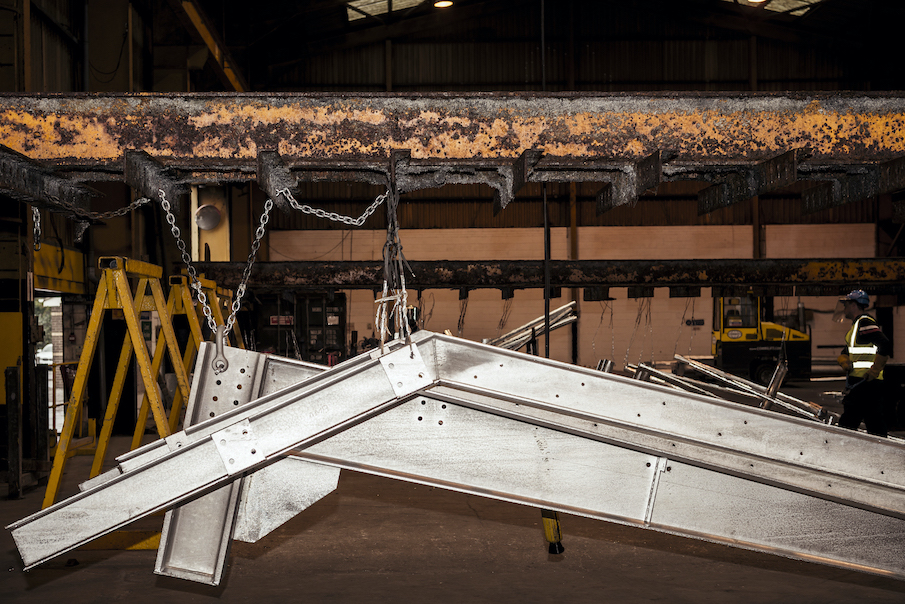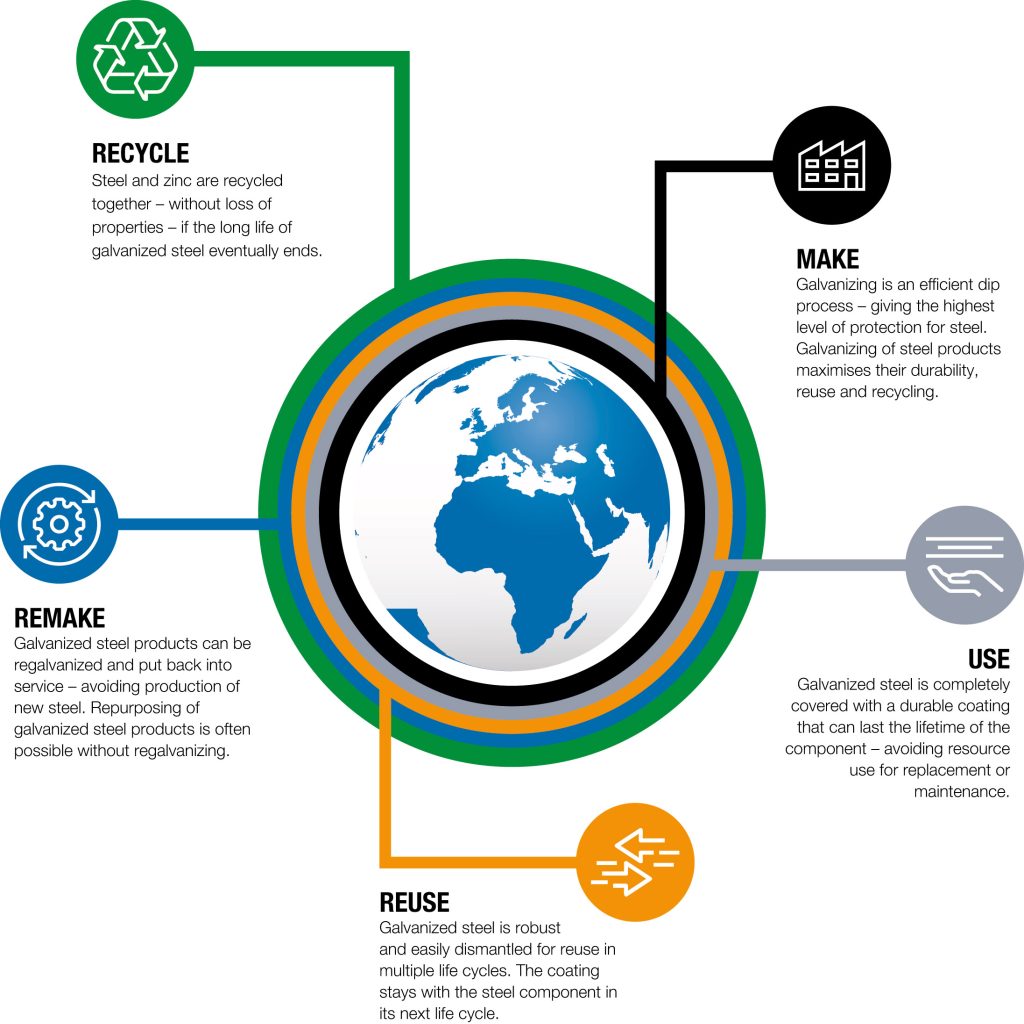Hot dip galvanizing for structural steel
Structural steel is used in the construction industry for load-bearing structures. Its high strength-to-weight ratio supports heavy loads such as bridges, transport systems and buildings. However, issues arise when structural steel can no longer do its job effectively.

Corroded steel is dangerous
Corrosion can threaten the load-bearing capabilities of structural steel. If decay occurs, the structural integrity of the steel weakens, which is potentially very dangerous. The heavy steel structure could collapse – not only ruining your fabrication, but also cause harm or even death.
Corrosion happens when steel is exposed to moisture, air, and other environmental factors. It can appear in a matter of days if there is no coating to protect the steel. Fortunately, galvanizing is a trusted method of protecting steel against corrosion.
How does galvanizing protect structural steel?
During the galvanizing process, steel is dipped into a bath of molten zinc. When the steel lifts from the bath, it is coated with a layer of zinc that has metallurgically bonded to the steel. This provides a long-lasting and durable barrier against corrosion.
The zinc coat also protects the steel against scratches and damage that could happen during storage and transportation.
Reasons to galvanize structural steel
Ensuring your structural steel fabrication is protected against corrosion is vital so that load-bearing structures do not collapse.

Galvanized steel remains strong for 35 – 100 years (depending on the environment), withstanding harsh and unpredictable weather conditions. Imagine how important this is for a bridge that may have cost millions and taken years to build.
Hot dip galvanizing also ensures that structural steel does not need regular maintenance, which could be the case with other coating systems. As a result, you save both time on money on arranging recurring steel maintenance (or as a worst-case scenario, re-making the fabrication from scratch).
We’ve compiled a list of some of the best reasons to galvanize your steel.
Environmental impact of galvanizing structural steel
As a material, galvanized steel is sustainable and environmentally friendly. It also plays a role in the circular economy, readily facilitating the principles of make, use, remake, reuse and recycle.

The galvanizing process itself is environmentally friendly, too. At Joseph Ash Galvanizing, we take a proactive approach to controlling emissions and ensuring the highest environmental protection for every project or function of our operations.
Structural steel galvanizing
With nine UK sites, we are never too far away to protect your steel.
- We’ll collect and deliver your steel to our site ✔️
- Comprehensive technical support, guidance and assistance at every stage ✔️
- Hot dip galvanized to BS EN ISO 1461 standards ✔️